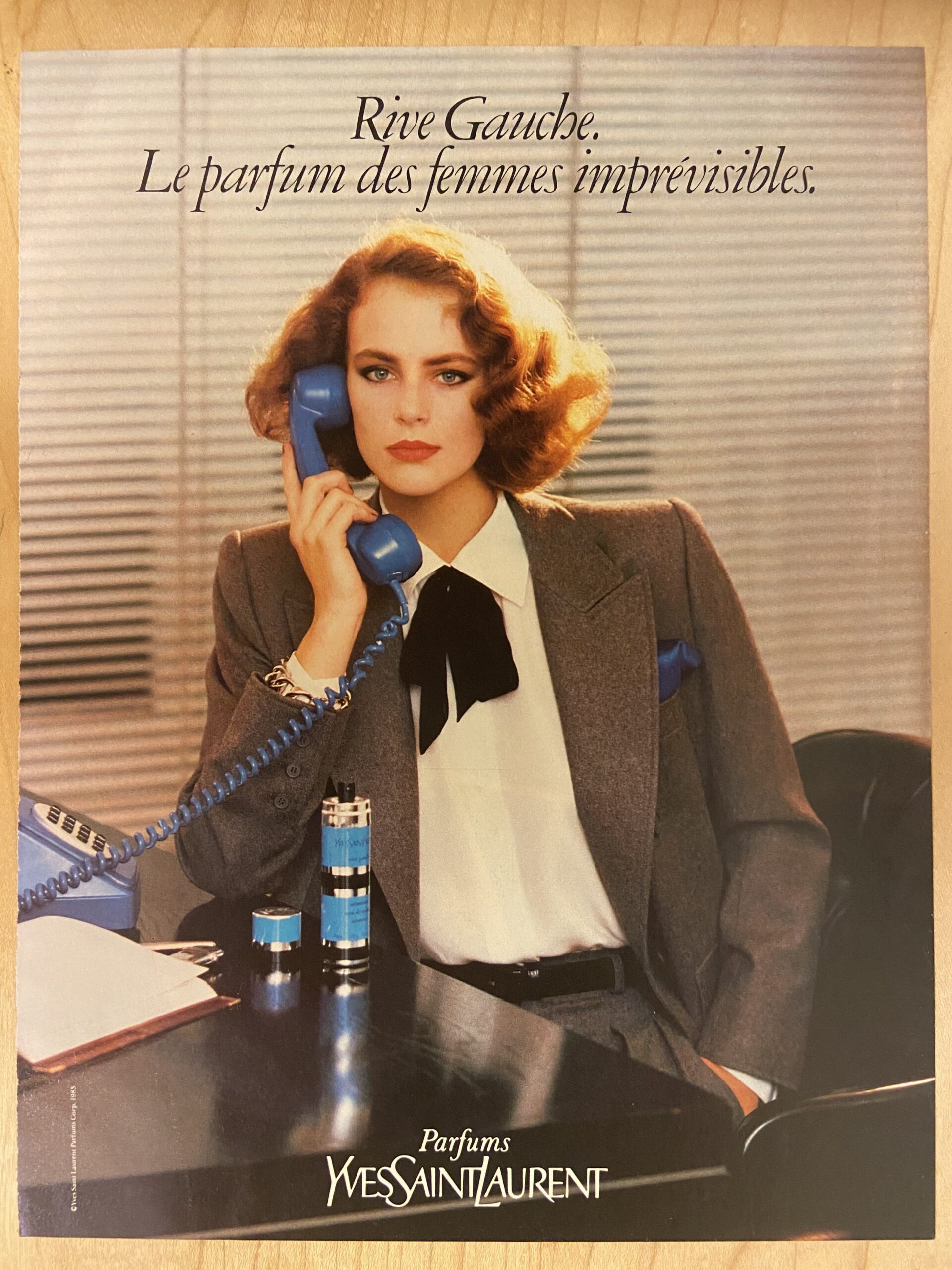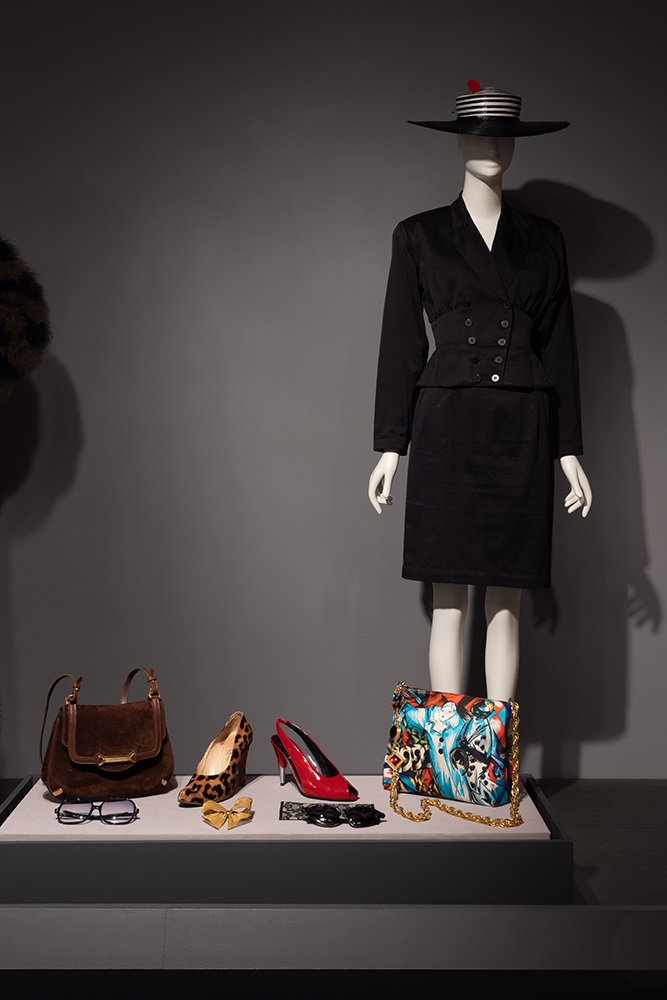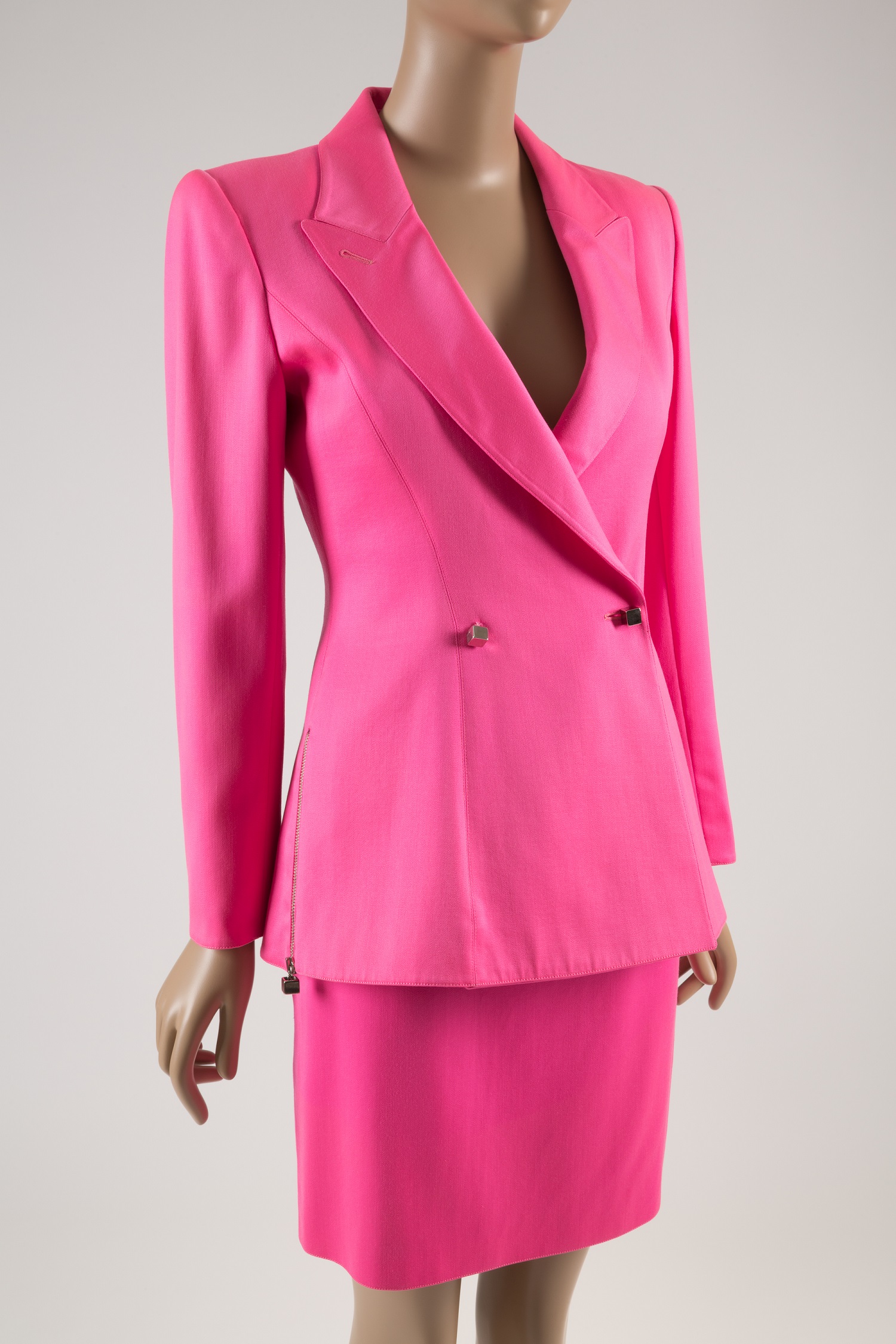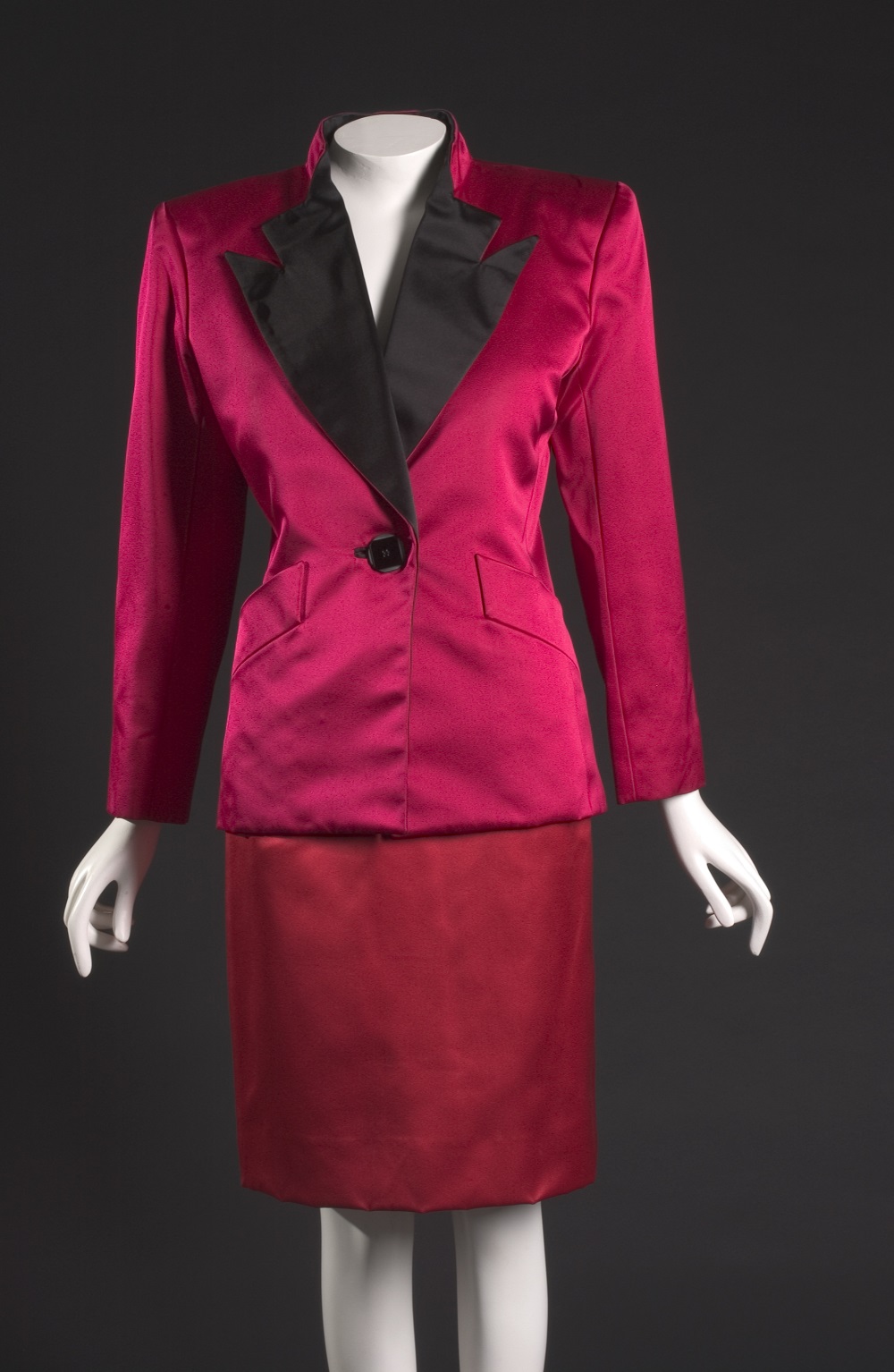Azzedine Alaïa suit
Azzedine Alaïa, black power suit, c. 1985. The Museum at FIT /https://www.fitnyc.edu/museum.
Claude Montana suit
Claude Montana, pink power suit, c. 1985. The Museum at FIT /https://www.fitnyc.edu/museum.
Yves Saint Laurent suit
Yves Saint Laurent, satin power suit, 1988. The Museum at FIT /https://www.fitnyc.edu/museum.
Background
In the 1970s and 1980s, the participation of middle-class mothers in the labor force increased significantly. While working-class women had always worked, white middle-class women who entered motherhood had been more likely to work part-time or stop working altogether. Colleges and universities removed barriers for women to attend, leading to a significant increase in the number of women with professional degrees. In 1977, 10% of medical school graduates were women. By 1997, that number had risen to 41%. In business, only 5% of executives at major corporations were women. By 2002, 25% of executives were women.
The increasing presence of women in the corporate workplace and new trends in fashion combined in the power suit. Dress for Success, a fashion guide for women published in 1977, stated that women needed to make strategic choices about what they wore to work, particularly in white-collar professions. The guide encouraged women to fit into the corporate world, but not completely emulate their male counterparts. Echoing masculine suits, power suits combined tailored jackets with narrow pencil skirts. The occasional bow or ruffle at the neckline allowed women to maintain traditional feminine styles and distinguished them from men.
About the Document
The advertisement from 1983 is for Rive Gauche, an Yves Saint Laurent perfume. The model wears a power suit and appears to be in an office setting, holding a phone to her ear. Advertising images of fashion and other luxury items frequently showed models with briefcases and in offices. The image of a powerful and fashionable professional working woman is presented as aspirational.
The other three images show examples of power suits of the 1980s. The first is a black suit by Azzedine Alaïa with shoulder pads. It also includes a matching hat, an accessory that had largely been abandoned by women in the 1970s. The second outfit is by Claude Montana in pink, a color whose revival in the 1980s is seen by some historians as part of a backlash against the feminist movement. The final power suit is by French designer Yves Saint Laurent, who introduced the female tuxedo, feminizing a powerful masculine outfit.
The high-fashion designs included in this resource were not accessible to most working women. Only a few wealthy women in powerful positions would have been able to purchase and wear these designs to work. However, the high-fashion styles inspired more affordable styles available at department stores. Professional women sported similar outfits in offices across the United States, emulating the new look of the successful working woman.
Discussion Questions
- What do you notice about these power suits? What would it be like to wear one?
- Which elements of these outfits stand out to you as traditionally feminine or masculine? How do you think both types of elements made women feel powerful?
- How do these outfits represent the new roles women took on in business as well as traditional femininity?
- How has fashion and views of gender expression through clothing changed since the 1980s?
Suggested Activities
- Film and television during this period often portrayed women in corporate settings while wearing power suits. Show students a clip from a film or television show from the 1980s to consider how popular culture captured women in these outfits.
- Power suits were an example of a conservative response to the feminist movement. Compare these images of power suits with the outfits feminists wore at protests in the 1970s. How could power suits be considered part of a backlash against this movement?
- Pair this resource with the life story of Dolly Parton. How did she empower herself through her traditionally feminine image?
- Consider the backlash against the feminist movement in popular culture by teaching this resource alongside a speech about music censorship.
- Explore how changes in women’s fashions were connected to changing roles women held in society by combining this resource with exercise outfits from the early 19th century and 1940s WAVES uniforms.
Themes
AMERICAN CULTURE; WORK, LABOR, AND ECONOMY










